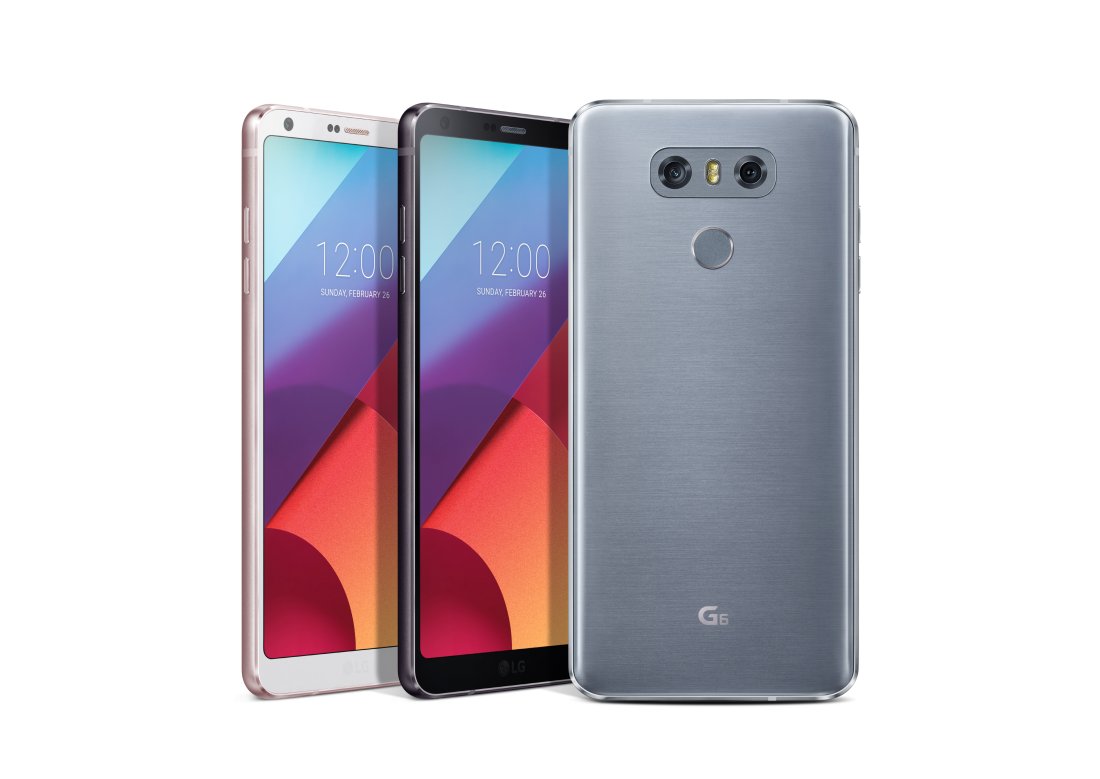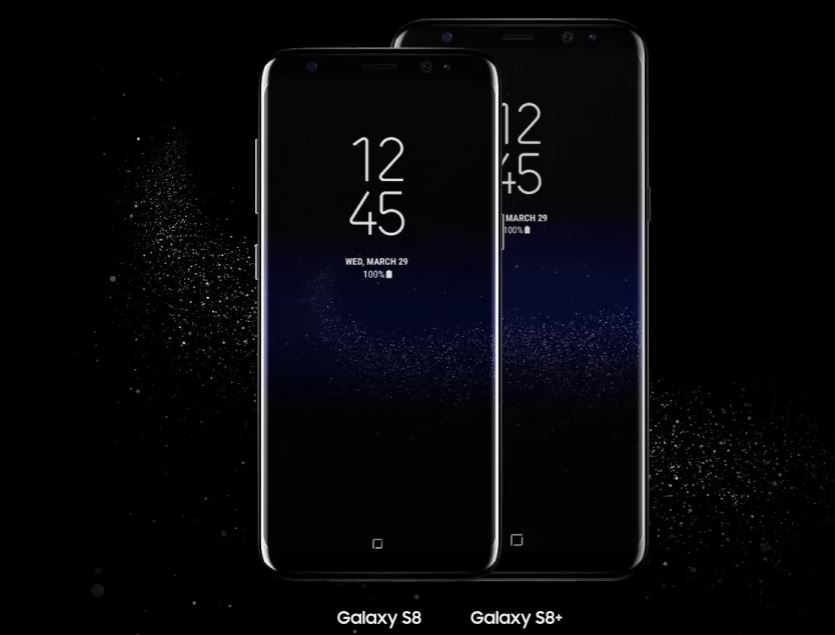LG and Samsung will fight an interesting war once their two flagship devices come out. Both models, the Samsung Galaxy S8 and the LG G6 offer interesting design, newest Android version, and some cool extra features, not to talk about supreme cameras found on moth handsets. On the other side, we have the iPhone 7, a bit outdated but still relevant.
How the three compare? Found out here.
Design, Dimensions

The Samsung Galaxy S8 offers dual curved screen while the LG G6 comes with a sweet-looking rounded-edges screen. Both devices look modern and attractive. The Galaxy S8 features a curved screen and minimal top and bottom bezels. LG decided to skip the curved screen hype and offered users a unique screen with rounded edges, which looks beautiful and (a completely subjective opinion) even better than the dual-curved display of its biggest rival.
The iPhone 7 features the usual Apple design, with huge side bezels, large Home button at the front, and already quite boring backside. The two models from Korean manufacturers sport fantastic front side design; LG placed dual camera setup on the back with a fingerprint sensor beneath the main camera, which we find better than Samsung’s solution (placing the fingerprint scanner next to the camera).
The LG G6 measures in at 148.9 x 71.9 x 7.9 mm, almost identical to Samsung’s 148.9 x 68.1 x 8 mm dimensions (the difference in width is caused by Samsung using bezel-free curved screen). The iPhone 7 is way compact than the other two (138.3 x 67.1 x 7.1 mm) but it also features way smaller display.

Hardware
Now, LG did choose to equip its latest flagship device with last year’s Snapdragon 821, and while the Galaxy S8 will score noticeably higher in benchmark apps and will be faster, the Snapdragon 821 ( 2×2.35 GHz Kryo & 2×1.6 GHz Kryo, Adreno 530) is still a superb chipset, with plenty of power and an excellent graphics chip.
The Galaxy S8 uses the latest chipset from Qualcomm, the Snapdragon 835 (4×2.35 GHz Kryo & 4×1.9 GHz Kryo, Adreno 540) for the US model, while the rest of the world is offered the Exynos 8895 Octa (4×2.3 GHz & 4×1.7 GHz) chipset. While both chipsets offer tons of power, Exynos is just a bit faster in benchmarks and it offers slightly better power optimization, while the Snapdragon has more powerful graphics chip.
Both devices rock 4 GB of RAM; the Samsung Galaxy S8 comes with 64 GB of internal memory, while the LG G6 packs 32 GB or 64 GB of internal storage.
The iPhone 7 features a powerful Apple A10 Fusion chipset (Quad-core 2.34 GHz, PowerVR Series7XT Plus GPU) that is more powerful than both the Snapdragon 821 and 835, and just slightly behind Exynos 8895. The phone comes with 2 GB of RAM (more than enough for the iOS) and a choice between 32/128/256 GB of built-in storage.

Camera
The Galaxy S7 featured the best camera found on any smartphone, so we hope its successor will offer the same. When looking at numbers and features, the Galaxy S8 offers practically the same camera as the one found in the Galaxy S7. The main camera counts 12 MP (f/1.7), it supports phase detection autofocus, OIS and LED flash, and is capable of recording 2160p@30fps videos. On the front, you can find an 8MO snapper capable of recording1440p@30fps videos.
LG is also known for its great camera solutions, and the Korean manufacturer didn’t disappoint with the LG G6 main camera. On the back, there’s a dual camera setup (13 MP f/1.8, OIS, 3-axis, phase detection AF + 13 MP f/2.4, no AF) with a dual LED flash. The main camera is capable of recording 2160p@30fps videos. The front snapper counts 5 MP and can record 1080p videos.
The iPhone 7 features a 12 MP camera (F/1.8) supporting phase detection autofocus, OIS, quad-LED (dual tone) flash, and 2160p@30fps video recording. On the front, there’s a 5MP camera capable of recording 1080p videos.
Screen
The Samsung Galaxy S8 features a huge, 5.8-inch AMOLED screen with a 21:9 aspect ratio and a resolution of 1440 x 2960 pixels. AMOLED screens offer deep blacks, rich colors, and they generally eat less battery.
The LG G6 packs a 5.7-inch IPS LCD, rounded corners display with an 18:9 aspect ratio and a resolution of 1440 x 2880 pixels. IPS screens feature natural colors, better viewing angles, and better whites.
The iPhone 7 comes with a relatively small 4.7-inch IPS LCD screen with a (compared to other two models) poor resolution of 750 x 1334 pixels. If you like big screens, stay away from the iPhone 7.
Battery, Additional Features
The iPhone 7 comes with a humble 1960 mAh battery; the Galaxy S8 features a bit small (considering the screen size) 3,000 mAh battery, while the LG G6 features a solid 3,300 mAh powerbank.
As for the additional features, Samsung packed everything inside its latest flagship – IP68 certification, quick charging, an iris scanner, fingerprint scanner, and wireless charging are all featured on the Galaxy S8.
The LG G6 comes with IP68 certification, fast and wireless charging, a fingerprint scanner, but no iris scanner.
The iPhone 7 features a fingerprint scanner and IP67 certification (splash and dust resistance), and that’s all.
Both the Galaxy S8 and G6 run the latest Android Nougat, while the iPhone 7 comes with the latest iOS 10.
Pricing, Conclusion
The Samsung Galaxy S8 should cost around S750, while the LG G6 should sport a price of around $600-650. Since the LG G6 features an older chipset, a lower price is expected. The iPhone 7 can be found for about Rs 48,000 ($740) and it’s just isn’t worth it for the price.
On the other hand, the LG G6 has that sweet rounded screen, an incredible camera, quality chassis, latest Android, lots of storage (which can be expanded) and it should cost $100 less than the Galaxy S8. Yes, it comes with the Snapdragon 821, but the difference between the 821 and 835 is viewable only in benchmark apps. In real life usage, you’ll hardly notice it.
If you’re a Samsung fan go for the Galaxy S8, but if you want the best bang for your buck we think that the LG G6 deserves your attention.
